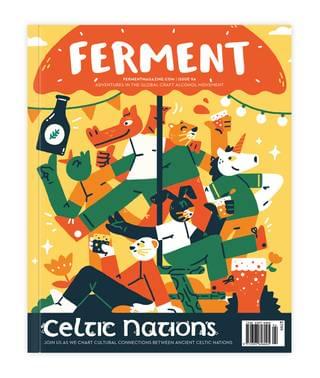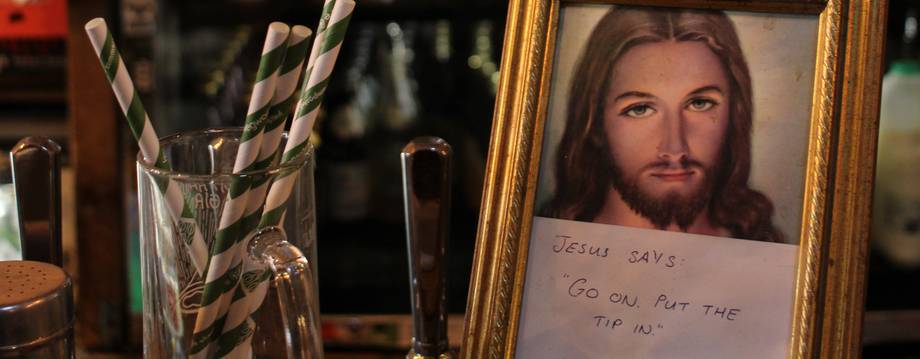Back to the future
All aboard the SABCO Brew Magic 50
Robyn Gilmour
Photos:
Robyn Gilmour
Saturday 29 July 2023

This article is from
Celtic Nations
issue 94
Share this article
In the back room of Edinburgh-based brewpub, The Hanging Bat, a new generation of brewers is born.
Centrally based and straddling the border between a multitude of suburbs, the chances are that if you drink beer and have been to Edinburgh, you’ve had a schooner in The Hanging Bat. Since opening its doors in 2012, this brewpub has stocked everything from Three Floyds to Dark Star, and in doing so has become a haven for modern craft in Scotland’s capital, a unique place, with an interesting relationship to beer.
For centuries, historic breweries like Belhaven, McEwan’s and The Caledonian Brewing Company rendered Edinburgh a destination for brewers and beer drinkers alike, but in spite of – or perhaps because of – their prolificity, these brands and others like them had their sites and portfolios acquired and dismantled by bigger beer corporations over the course of the late 20th/early 21st centuries. While closures didn’t dim the capital’s enthusiasm for brewing, or disrupt the torrent of brewers that have been pouring out of Heriot Watt’s degree programmes in Brewing and Distilling since the early 90s, it did leave Edinburgh with comparatively few independent breweries of a small to medium size.
That, of course, has been changing. In addition to Barney’s, Bellfield, Vault City, Otherworld, Crossborders and Stewart Brewing, the city’s northern suburb of Leith has recently added Newbarns, Donzoko and Moonwake to a portfolio already brimming with brews by Pilot, and Campervan. Beer by artisanal, independent producers is now commonplace in Edinburgh, and while well on its way to becoming a beer city, I dare say the best of Edinburgh brewing is yet to come. But what’s all this got to do with The Hanging Bat?

Carlos and Holly
Until I speak with the brewpub’s manager Jamie Higgins, and resident brewers Holly Lewis and Will Hiscocks, I approach The Hanging Bat’s role in this beery revival with the mindset that correlation does not imply causality. The bar, after all, might have read the writing on the wall and set up shop – just like other bars and breweries of a similar age – to ride the wave of craft beer that came from the US, and crashed over UK shores in the late naughties. But a bar out to make a buck, doesn’t fit the back room out with a SABCO Brew Magic 50, the 50 litre brew kit that legendary West Coast brewery, Dogfish Head, started out on.
This brew kit is really what The Hanging Bat’s story revolves around, as the SABCO’s installation had ramifications, not just for Edinburgh’s brewing scene, but craft beer in the U.K. With the kit being very manual but incredibly versatile, and of a size that experiments are low stakes but come with massive potential for educational gain, the SABCO is not only a magnet for young brewers, but is so esteemed that even my colleague, Carlos de la Barra, who’s the head brewer and wine maker at Beer52, is keen to get a shot brewing on it.
“I find it really interesting to think about the people who have brewed on this kit before me,” says Holly, as she stirs soaking grist, that’s soon to become the grain bed of a West Coast IPA she and Will wrote the recipe for. “I was digging around in the cellar one day when I came across a notebook and recognised the handwriting in it as my ex-colleague Jonny Hamilton’s,” she continues, telling me she used to work with Jonny at Newbarns, where the Pellicle co-founder is also an established brewer.

“Johnny Horn, who’s now a brewer at Holy Goat, also worked here, as did Robin Head-Foreman who’s now at Beak Brewing. Some really interesting people have come through here and used this kit, so it’s really nice for us to now work on it, and realise that this is where so many people with incredible brewing careers have started out, and now we get to start our careers here too”.
And thank god Will and Holly decided The Hanging Bat is where they wanted to start. When Jamie Higgins took over management of the bar, just before the first lockdown, the brewery hadn’t been used for some time. It just so happened that Will – who’s earning his Masters degree in brewing and distilling from Heriot Watt – caught wind of its disuse and, looking for a space to brew frequently himself, asked if Jamie would be interested in reviving the site with him so he could practise, and Jamie could sell beer less than five metres from where it was made. Needless to say, his answer was yes.
Will and Holly now share management of the brewery, the pair have become best friends as well as valued colleagues over the course of their brewing careers to date. The support each lends the other, and the interest they take in sharing knowledge makes me excited for what contributions they’ll bring to brewing, when they get their hands on a bigger kit.

For one, both Will and Holly are completely obsessed with heritage grains. Will’s undergrad research project explores the optimisation of malting in heritage grains grown in Scotland, many of which was first grown in the 1800s, but which were later disregarded because of its comparative inefficiency in the brewhouse, in spite of flavour contributions and potential disease resistence. Both he and Holly are massive advocates of research happening in the field of brewing, and which has been lacking in decades gone by, at least insofar as small scale artisanal brewing is concerned.
That said, Will is the first to say that “knowing all the theory in the world won’t make you a good brewer”. To this, Holly adds that big brewing can also learn a lot from age-old homebrewers. She tells me that her ears have often perked up at the end of the bar, when she’s washing up after a brew and overhears drinkers deep in conversation about the finer details of beer. Sometimes she’ll join in, and engage people in conversation about their opinions and experiences. Just another benefit of brewing in the beating heart of a growing beer city.
Share this article

